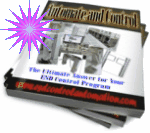ESD grounding or ESD bonding reference point is the ground point where ESD Technical elements are connected to. This ESD grounding/bonding system can be any of the following:
• AC equipment ground
• Auxiliary ground
• Equipotential bonding
AC equipment ground:
AC equipment ground is preferred as the ESD grounding/bonding reference point. It is the 3rd terminal of an ac power receptacle. When ESD Technical elements such as wrist strap, floor mat, cart and work surface are connected the AC equipment ground, they are brought to near or to the same electrical potential with other AC powered equipments or tools used within the ESD Protected area or also known as EPA.
When AC equipment ground is used as the ESD grounding system, it has to be verified periodically as defined in the ESD Control program plan.
The followings have to be verified by using an Impedance meter:
• Wiring orientation of the Hot, Neutral and equipment grounding conductor are not reversed.
• The impedance of the equipment grounding conductor from the AC equipment receptacle to the neutral bus in the main service equipment panel shall be less than 1 ohm.
• The neutral and the equipment grounding conductor are not connected at the AC power receptacle.
Auxiliary ground:
An auxiliary ground is basically a separate supplemental grounding conductor used to provide a grounding path for the ESD Technical elements.
Some organizations require the use of an auxiliary ground as their ESD grounding system.
Again, the auxiliary ESD ground has to be verified to ensure its integrity and adequacy as the ESD grounding/bonding reference point.
The resistance between the Auxiliary ground and the AC equipment ground shall be less than 25 ohm.
Equipotential bonding:
When AC equipment ground is not available for example out in the field service area, equipotential bonding system can be used to safely handle ESD sensitive parts.
All the ESD Technical elements, tools and equipments and materials are bonded and connected to the same common connection point. This methodology helps to equalize all the electrostatic charges that present in the total system, and as a result there is no hazard electrical potential difference between the items in the system that could potentially cause ESD damage.








No comments:
Post a Comment